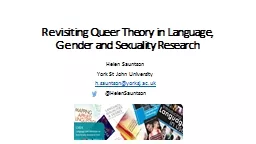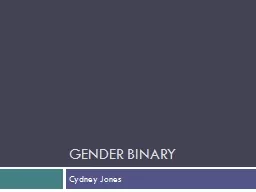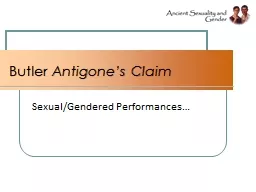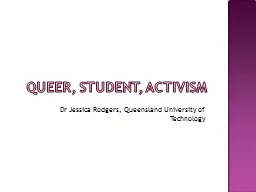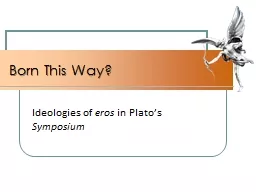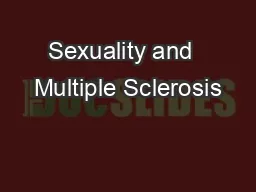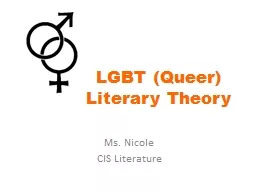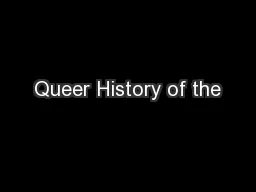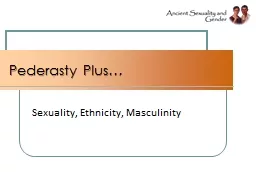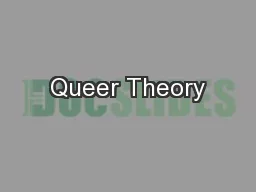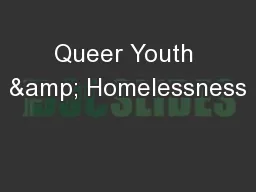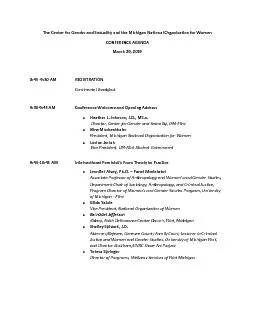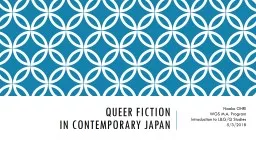PPT-Revisiting Queer Theory in Language, Gender and Sexuality R
Author : aaron | Published Date : 2017-04-11
Helen Sauntson York St John University hsauntsonyorksjacuk HelenSauntson Im a queer demisexual gender queer although I use female pronouns Im a cisgendered biromantic
Presentation Embed Code
Download Presentation
Download Presentation The PPT/PDF document "Revisiting Queer Theory in Language, Gen..." is the property of its rightful owner. Permission is granted to download and print the materials on this website for personal, non-commercial use only, and to display it on your personal computer provided you do not modify the materials and that you retain all copyright notices contained in the materials. By downloading content from our website, you accept the terms of this agreement.
Revisiting Queer Theory in Language, Gender and Sexuality R: Transcript
Download Rules Of Document
"Revisiting Queer Theory in Language, Gender and Sexuality R"The content belongs to its owner. You may download and print it for personal use, without modification, and keep all copyright notices. By downloading, you agree to these terms.
Related Documents

